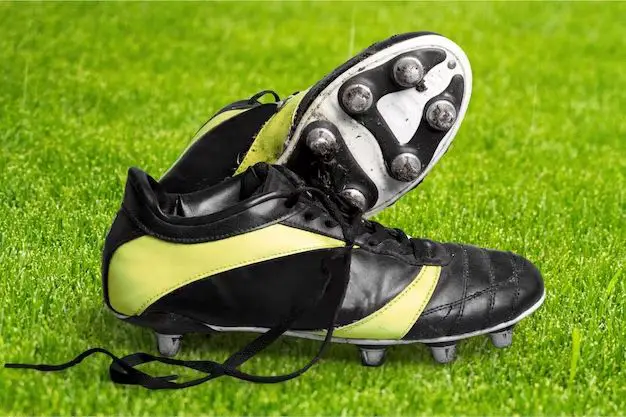Proper cleat placement is an important consideration when outfitting a boat. The location of cleats impacts how lines are run, the ability to tie up the boat securely, and the convenience of handling lines while docking. There are some general guidelines to follow when determining the optimal cleat placement for a boat.
Page Contents
Bow Cleats
The bow is where cleat placement often receives the most thought. Bow cleats are used for securing the bow lines when docking and anchoring. Here are some tips on bow cleat placement:
- Cleats should be positioned so lines can run cleanly from the cleat to the bow without crossing other lines.
- They should be placed so the operator has convenient access to them while docking.
- On center console boats, cleats are often placed right next to the forward corners of the console.
- For bow riders, cleats are commonly set about 12-18 inches behind the bow corners.
- Make sure cleats are not so far back that the angle of the line is too shallow when docking.
- Having port and starboard cleats at the same distance from the bow allows symmetrical docking.
Here is an example diagram showing recommended bow cleat placement:
| Side View | Top View | |
|---|---|---|
| Bow Cleat Placement |  |
 |
Stern Cleats
The stern also requires proper cleat placement when docking and anchoring. Here are stern cleat guidelines:
- Cleats should be positioned so dock lines can be run cleanly.
- They need to be accessible when maneuvering the stern into the dock.
- If a boarding platform is present, cleats should be outboard of the platform so lines are not obstructed.
- Allow enough room to pass stern lines without interfering with motors or ladder.
- On center consoles and cuddies, cleats placed near the stern corners make handling lines easy.
| Side View | Top View | |
|---|---|---|
| Stern Cleat Placement |  |
 |
Midship Cleats
In addition to bow and stern cleats, many boats have amidship or midship cleats. Here are some midship cleat considerations:
- They allow lines to be secured at mid-length for flexibility.
- Facilitate spring line docking by having fore and aft pairs.
- Useful for securing fenders in place when docked.
- Can be used as attachment points for tow lines.
- Should be placed so lines lay flat against the hull.
Here is a typical midship cleat installation:
| Midship Cleats | |
|---|---|
| Example Placement |  |
General Cleat Placement Guidelines
In addition to bow, stern, and midship placement, here are some overall cleat installation guidelines:
- Use cleats rated for the size of the boat. Don’t undersize cleats.
- Space cleats at least 18-24 inches apart.
- Allow room for chafe gear on lines.
- Mount cleats on reinforced backing plates for strength.
- Vertical orientation provides the most holding power.
- Angle toward the hull to keep lines tight.
- Consider flush or pop-up cleats if deck space is limited.
- Test different docking scenarios before finalizing placements.
Specialty Cleat Types and Locations
In addition to standard horn cleats, there are some specialty cleat designs and locations to consider:
- Corner cleats – Improve pull at dock corners.
- Chocks – Open type cleats for mooring lines.
- Bitts – Double horn cleats used with large lines.
- Cross cleats – Hold multiple lines from various angles.
- Under gunwale cleats – Unobtrusive but still accessible.
- Toe rails – Integrate cleats for minimal snagging.
- Padeyes – For attachment points where cleats won’t fit.
Carefully consider how these specialty cleat types can supplement standard cleats to enhance function and aesthetics.
Using Cleat Type to Manage Loads
The type and size of cleat used should correspond to the line sizes and expected loads. Here are some typical cleat choices based on load capacity:
| Cleat Type | Line Size | Load Capacity |
|---|---|---|
| Small horn cleat | 1/4″ – 1/2″ | Up to 1,000 lbs |
| Medium horn cleat | 1/2″ – 5/8″ | Up to 2,000 lbs |
| Large horn cleat | 5/8″ – 3/4″ | Up to 3,000 lbs |
| Chock cleat | 3/4″ – 1″ | Up to 4,000 lbs |
| Double bitt | 1″ and up | Over 4,000 lbs |
This chart can be used as a guide, but the manufacturer’s rated capacity should always be followed.
Using Cleat and Chock Materials Suited to the Job
Cleats and chocks are manufactured from different materials that have distinct properties. Using the right material for the job is important. Here is an overview of common cleat and chock materials:
- Plastic – Lightweight and corrosion resistant but lower strength.
- Aluminum – Lightweight and corrosion resistant but prone to damage.
- Stainless Steel – Very strong but expensive.
- Chrome Plated Brass – Classic look but requires polishing.
- Anodized Aluminum – Lightweight and low maintenance.
Consider factors like cost, appearance, longevity, and line loads when selecting cleat and chock materials. High load areas like midship cleats are good candidates for stainless steel.
Conclusion
Proper cleat and chock placement provides the foundation for secure, convenient boat handling. Carefully think through docking and mooring scenarios to identify optimum locations to mount these essential fittings. Locate bow, stern, and midship cleats so lines can be easily run and load forces are spread evenly across the hull. Select the right size, style, and material of cleat for the intended use. Well-placed cleats result in clean lines, reduced chafe, and confident handling during critical docking and anchoring maneuvers.
